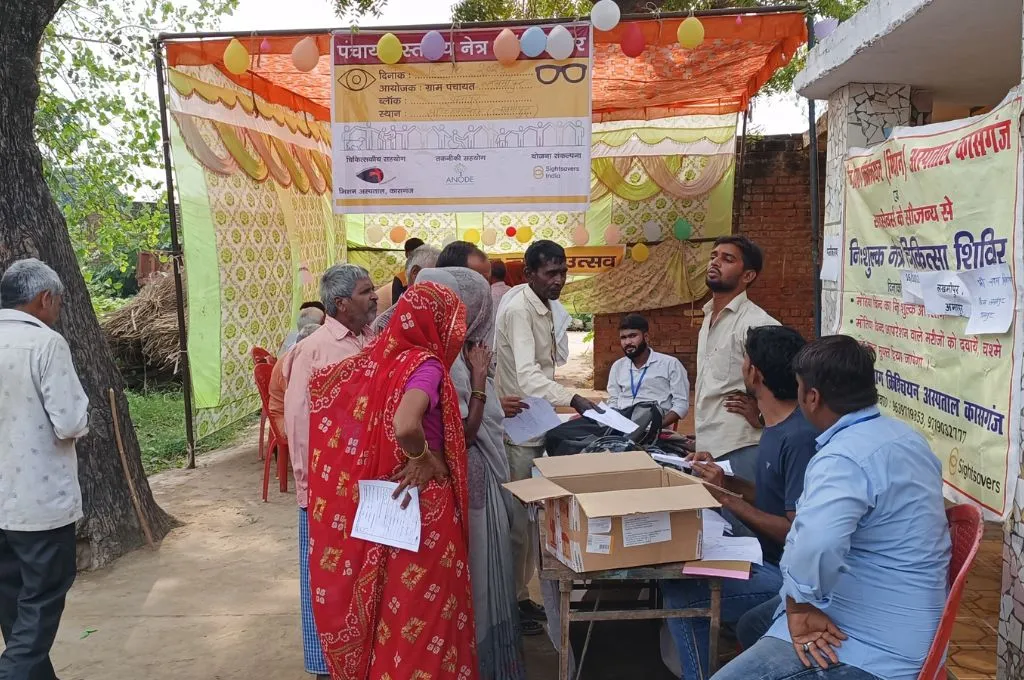Family laws regulate the most intimate aspects of our lives, such as marriage, divorce, parenthood, and inheritance. While some of them are secular and apply to all citizens regardless of faith (Special Marriage Act, 1954), others apply to individuals belonging to certain religions (Parsi Marriage and Divorce Act, 1925) or communities (special provisions for followers of aliyasanatanam or marumakkattayam law under Section 17 of the Hindu Succession Act, 1956). Secular laws are codified in the form of legislations and personal laws are codified to a certain extent, but customary laws (those that apply to a particular community) remain largely uncodified.
Given that most family laws discriminate on the basis of sex and disadvantage women, the need for reform is widely recognised and has been a core demand of the women’s movement. But there has always been a lack of consensus on the manner in which this reform should be arrived at—whether through a secular and uniform family law code or through an amendment of religious personal laws themselves. There have been examples of both since Independence: the Hindu code bills of the 1950s that sought to codify and reform Hindu personal law, and more recently, the Uttarakhand Uniform Civil Code (UCC).
However, these attempts have been few and far between, and even misguided in some cases. For instance, recent reform endeavours such as the Uttarakhand UCC have often been dominated by calls for a ban on polygamy (or polygyny as it is practised). However, polygamous relationships continue to be a reality despite being prohibited. In addition, banning polygamy does not centre the rights and interests of women, which is at the core of the demand for any UCC. Therefore, it is necessary to think about the rights and status of wives—especially their financial security through maintenance and inheritance—in polygamous marriages that exist outside the purview of the law.
In addition, all classes of family laws recognise only sex-based identities—sex as comprising only the binary of male and female—and are not queer-inclusive. Recent calls for marriage equality witnessed a slew of petitions filed by different stakeholders in the Supreme Court demanding queer-inclusive family laws. However, the Supreme Court refused to recognise the right to marry as a fundamental under the Constitution, and stated that it is the legislature’s prerogative to enact queer-inclusive family laws.
All of this points to the fact that bringing in queer-inclusive and gender-just family laws requires legislative intervention. Such an opportunity should not be lost to regressive initiatives; the focus must instead be on enacting a family law regime that is fit for a 21st-century India—accommodating its diverse family structures, cognisant of the various contributions of women to the functioning of families, and inclusive of queer identities.
To this end, Vidhi Centre for Legal Policy has attempted to examine what a modern, gender-just, and queer-inclusive family law regime can be through the Model Code on Indian Family, 2024. It is a product of year-long consultations with legal practitioners, academics, members of civil society, and activists. While legal reform must come from the public through democratic and deliberative processes, the Model Code seeks to start a much-needed conversation on reform by presenting a concrete legislative framework.

What can a gender-just and queer-inclusive family law look like?
The starting point of any exercise in reforming family laws is taking stock of gender-linked inequalities in the law and its implementation, as well as how the law deals with power dynamics in relationships. Here is a glimpse of what a gender-just and queer-inclusive family law would factor in.
1. Marriage and conjugal rights
One of the first steps must be to revise the provision on the restitution of conjugal rights as defined in Section 9 of the Hindu Marriage Act, Section 22 of the Special Marriage Act, and Section 32 of the Divorce Act. This provision allows either spouse to approach a court for an order of mandatory cohabitation with the other party. While framed in a gender-neutral manner, such a provision is most often utilised to undermine women’s bodily autonomy and forces them to cohabit in what can be hostile conditions.
A queer-inclusive family law must ensure that all persons—regardless of gender identity and sexual orientation—have a right to marry, become parents, and inherit property. However, queer inclusion cannot be achieved by drafting a gender-neutral law. This is because women-centric provisions, especially those pertaining to maintenance and alimony, specifically account for patriarchal power relations in families. Consequently, under most maintenance laws, the onus of maintenance is placed on the husband.
An alternative approach towards queer inclusion is ensuring that the protective provisions aimed at safeguarding the rights of ‘weaker’ parties do not view only biological sex as the basis of vulnerability. Instead, they must articulate a list of factors that can be taken into account to judge which spouse is more vulnerable. Such factors could include economic status, the contributions (both tangible and intangible) made by each spouse to the relationship, the needs of both parties (for example, medical expenses), and the obligations of each party to care for dependents. A provision that identifies the structural basis of vulnerability would not only encourage queer inclusion but also account for the specific vulnerability of women in heterosexual marriages.
2. Divorce and matrimonial property
Currently, India does not have express legal provisions for the division of matrimonial property. During divorce and maintenance proceedings, courts follow common law and the property is divided based on who holds the title. Such an approach fails to consider that while women may contribute substantially to a relationship in myriad non-financial ways, such as care and control of the household, they rarely have ownership over the financial gains from the relationship. In addition, data from the fourth and fifth rounds of the National Family Health Survey (NFHS) suggests that women own significantly less property and are mostly only able to acquire it through inheritance.
A strong matrimonial property regime also prevents divorce from being used as a mode of abandonment.
A matrimonial property regime that provides for the sharing of property upon marriage would allow for equal ownership of the financial gains during a marriage to both the partners. This provision is known as communion of property, under which all jointly or separately acquired property of the spouses goes to a common matrimonial pool. There are certain exceptions, such as gifts acquired for the exclusive use of one of the parties and streedhan acquired by a woman.
On the dissolution of marriage, the pooled property is divided equally between the parties regardless of who acquired it. Such a regime would make space for the recognition of each party’s financial and non-financial contributions to the relationship. A strong matrimonial property regime also prevents divorce from being used as a mode of abandonment, and strengthens the rights and status of divorced women.
3. Parental rights and succession
Finally, a gender-just family law must ensure that parental rights in relation to the custody, care, and guardianship of a child are provided equally, irrespective of the gender of the parties. Custody decisions should be based on the ‘best interests of the child’, with a focus on the willingness and conduct of the parties in taking care of the child, which is mainly demonstrated through the amount of time spent in fulfilling caretaking responsibilities rather than economic capacity. This is because metrics such as economic capacity are likely to be skewed largely in favour of men.
In addition, laws on parenthood assume the marital heterosexual family as the norm. Most parenthood laws in India deem the birth parent as the mother and the person married to the mother as the father. A queer-inclusive law must move beyond biology and recognise functional parenthood as well, which focuses on the intention to parent and the act of carrying out parenting as the legal basis of parenthood. Laws on adoption do this through legal recognition of the social bond between adopting parents and the adopted child. It is critical to reflect this approach in other laws on parenthood including guardianship, surrogacy, and artificial reproductive technologies.
Succession laws must also include protective measures for vulnerable parties.
Laws on succession, which recognise only the binary sexes of male and female, must include persons of all genders and ensure equal rights for all children regardless of their gender identity. In addition, they must cease the use of gendered language such as ‘mother’, ‘father’, ‘son’, and ‘daughter’. Instead, they should adopt gender-inclusive language such as parent, spouse, and children. Most jurisdictions that include queer persons within the domain of family laws have shifted from gendered to gender-neutral language to include persons of all gender identities and sexual orientations.
Succession laws must also include protective measures for vulnerable parties. Women, queer persons, and persons who make decisions that are not acceptable to the family (for example, marrying outside of one’s caste or religious group) are disinherited through the use of wills. Protective measures must therefore be encoded into succession laws to enable parties to challenge disinheritance motivated by prejudice.
Towards a new understanding of family
The state regulates and recognises intimacy in only some forms, such as marriages or now, in some cases, live-in relationships. This recognition is thus limited to relationships that are assumed to be romantic or sexual in nature. But there are many relationships and households that do not fall within this narrow understanding of what a family can look like. Individuals are creating their own structures of support outside the stringent bounds of marriage and blood ties. These are their ‘chosen families’. One of the oft-cited examples is that of hijra gharanas (joint households of certain gender-nonconforming communities prevalent in India). The existence of maitri karars (friendship contracts) and platonic cohabitation arrangements among friends shows that atypical families are very much present in India.
Inheritance laws continue to be based on archaic, patriarchal ideas of familial responsibility and entitlement to wealth.
The law’s understanding of the family needs to be broadened in accordance with the ground reality. Family laws must recognise the values and purposes of mutual care and dependence that underlie families, be it in the context of entering into partnerships or parenting. One way is to create a framework for acknowledging these relationships so that such family arrangements can be intimated to the state even though they do not amount to marriage, which often has romantic and sexual connotations. Such frameworks have been recognised in other countries as well, in the form of civil unions or domestic partnerships, and have proven especially inclusive for queer persons. The values at the core of such relationships can be mutual support and care, financial interdependence, and the commitment to building a life together.
Such a framework will facilitate access to a bouquet of rights and entitlements that are only accorded to people related by marriage or by blood. These include maintenance, inheritance, healthcare decision-making, the ability to take joint loans, and nomination for next-of-kin purposes such as insurance.
Family laws need to be updated in other areas as well. Inheritance laws continue to be based on archaic, patriarchal ideas of familial responsibility and entitlement to wealth. Under Muslim personal law, for instance, female heirs receive half the share that similarly related male heirs receive. Under Hindu personal law too, the property of deceased married male and female persons is inherited differently due to the patriarchal view that a wife is a member of the husband’s family and has severed ties with her natal family after marriage.
This is a far cry from the reality of contemporary families. Gender roles are shifting and the nuclear family unit is gaining prominence. Inheritance laws thus need to be modified to align with what a modern Indian family means today, with adequate rights for the spouse/partner, children, and parents in a family unit.
In the context of parent–child relations, presently the institution of parenthood is regulated through guardianship laws with fathers being the natural and sole guardians of their children, and parents exercising authority over the child. A responsive family law regime must shift from the concept of guardianship towards a progressive framework on parental responsibilities and rights. Such a framework moves away from a parent-centric approach to a child-centric approach, with appropriate focus on the best interests of the child. It also replaces the concept of parental authority with that of parental responsibility, where parents hold rights to carry out their responsibilities towards their children.
As political discourse around family law reform enters the mainstream once again, it is critical for stakeholders to advocate that such a process be informed by constitutional principles, and inclusive and evidence-based policy positions. While a critique of family law is important, there is also a need to present what an alternative family law can look like to guide deliberation. The 2024 Model Code is one of many attempts to this end, outlining what form a gender-just, queer-inclusive, and socially responsible family law regime could take.
—
Know more
- Read the Model Code on Indian Family Law.
- Understand what feminist approaches to justice entail.
- Learn more about feminist debates around the UCC.
Do more
- To further discuss the Model Code, share comments and explore potential collaborations on family law, gender justice, and queer inclusivity, write to rakshita.goyal@vidhilegalpolicy.in, kartavi.satyarthi@vidhilegalpolicy.in, and namrata.mukherjee@vidhilegalpolicy.in.







